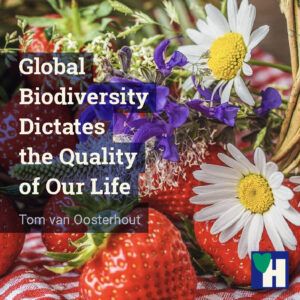
Global biodiversity dictates the quality of our life. You might compare it with our personal health. It’s one of our most important assets. The reason of course is that it makes us feel good. Yet, there is more. We perform better when we are healthy. Physically and mentally. We measure our well-being by our health. Our quality of life is measured by our health.
There are a lot of pines where we live. All the neighbours in our street spray poison against the pine processionary caterpillar. This spraying is totally nonsense and goes against every biodiversity logic. All the natural enemies of this caterpillar live here: the praying mantis, dozens of bats, cuckoos, and the great tit. Our neighbours consciously destroy the habitat of these animals and are a threat to the biodiversity in this area.
For us, biodiversity is the thermometer of a healthy globe. Does this mean, the more biodiversity, the better? We would wish it to be that simple.
Some of the links are affiliate links. As an affiliate associate, we earn a commission when you purchase any of the products offered through the shared links at no extra cost for you. This helps us maintain this website.
Table of contents
- 1 Global biodiversity is important to survive
- 2 Our livelihood
- 3 Domesticated global biodiversity in decline
- 4 Monocultural farming systems
- 5 Wildlife global biodiversity in decline
- 6 Extinction is ‘normal’
- 7 Conservation of global biodiversity
- 8 Spain is a biodiversity hotspot
- 9 Endangered hotspot animals
Global biodiversity is important to survive
From the beginning of our existence, humankind has had an – at times devastating – influence on flora and fauna. Monocultural farming and pesticides are not helping in maintaining a good climate in which biodiversity can thrive.
Our livelihood

There are 2 types of global biodiversity: the biodiversity of domesticated plants and livestock and wildlife biodiversity. Each type includes 3 closely related levels: diversity within species (the genetic level), the number of species and their population (the species level), and the natural habitats providing the necessary conditions for populations of species (the ecosystem level).
The first type of global biodiversity, the domesticated one, is extremely important for us human beings. This type of global biodiversity provides our livelihood. Without it, we could not survive. Domesticated biodiversity and wildlife biodiversity are intricately related. The problem with both types of global biodiversity is that they are in decline.
Domesticated global biodiversity in decline
Domesticated biodiversity is one of the agri-environmental parameters. The others are: nutrient use, pesticide use, water use, land use and conservation, soil quality, water quality, greenhouse gases, wildlife habitats, landscape, farm management, farm financial resources, and socio-cultural issues.
Not to mention that these need to be balanced against each other. From one study to another, it appears that farm management is the biggest and at the same time the most problematic challenge. This is where the problems emerge. Most farmers don’t manage their farms anymore.
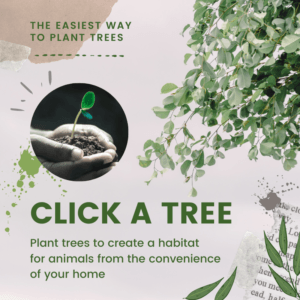
Their farm management is totally controlled by the food industry. The food industry dictates what to produce, when to produce, and how to produce. Most farmers have no idea why they do what they do. As a result, most of the agri-environmental parameters are in decline.
Soil nutrients are down. Pesticide use goes up. There is not enough or too much water. Land use and conservation are dominated by monocultures. Most agricultural soil is dead. Water pollution is widespread. Dairy farming and large-scale animal production are the biggest producers of greenhouse gases. Wildlife habitats are in decline. Landscapes become uninspiring. Farm incomes are down. Conventional farmers more and more get in conflict with society because they do not respect global biodiversity.
Monocultural farming systems
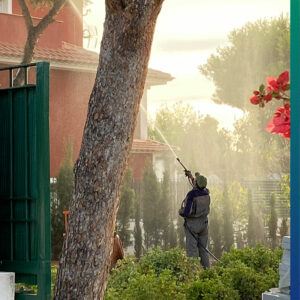
The only reason that France is number 2 on the list of countries exporting agricultural produce, is that they grow a massive amount of sugar beets. Driving through the north of France during the autumn, you will notice huge machines harvesting 24 hours a day and 7 days a week.
In November of this year, the French Parliament decided, despite a EU-ban, to allow the sugar farmers to coat their beet seeds in neonicotinoid. This pesticide resembles nicotine, which makes it dangerous for humans because of its carcinogenic capacities. Moreover, the product kills insects and bees and as a consequence birds.
Monocultural farming systems are the biggest threat to domesticated biodiversity because of the higher environmental risks and costs. Such risks and costs emerge from excessive use of nutrients and pesticides. Which also has a substantial impact on wildlife biodiversity.
Wildlife global biodiversity in decline
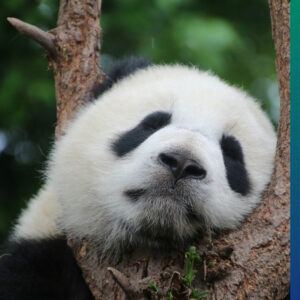
There are serious global biodiversity problems. In the past 50 years, most plant and animal species are in decline. Only a relatively small fraction of flora and fauna are in extreme decline. However, in northern and temperate regions some plants and animals improve, thanks to restoration and protection efforts.
Extreme loss of biodiversity occurs in the Indo-Pacific region. Bird and fish systems show the most catastrophic decrease, followed by reptiles and amphibians. Specifically, reptiles in North, Central, and South America are in extreme decline. The number of arctic marine mammals, such as polar bears and seals, is also decreasing dramatically.
Large species face more decline than smaller ones. Whales, polar bears, brown and black bears and grizzlies, elephants, rhinoceroses, lions, orang-utans, and gorillas, are some of the most vulnerable animals.
Another problem is when wild animals are invasive. For instance when they are imported into habitats that are not naturally theirs. This happened with rabbits in Australia. In the nature park where we live close by 1,500 wild goats are being shot. A very rich man who lived here thought it would be nice to have some goats here in the mountains and imported a few from North Africa. Now they’re a threat to all other animals.
Extinction is ‘normal’
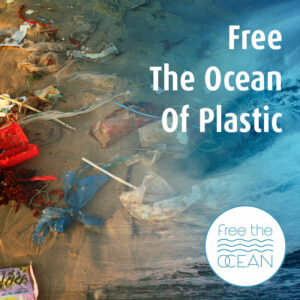
The extinction of plants and animals, as such, could be interpreted as ‘normal’. Today’s species constitute only 5-10% of the plants and animals that ever existed on the globe. This means that 90-95% of all animals and plants that ever lived on the globe ceased to exist.
However, with the rise of the number of sedentary humans, the extinction rate grew exponentially. There are many reasons for extinction: the destruction of habitats, invasive species, industrial and household pollution, over-population, and extreme exploitation of ecosystems, for instance through agriculture.
The problem is that we do not even remotely know how many species of plants and animals exist on the globe. Estimates range from 3 to 100 million species. Elephants, tigers, and polar bears can easily be spotted. But most animals can only be detected with a microscope. This makes conservation an immense challenge.
Conservation of global biodiversity
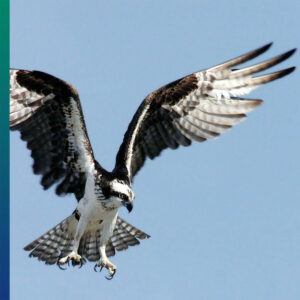
Why is the conservation of global biodiversity relevant? The beauty of plants and animals is reason enough. Plants and animals and their habitats are also extremely important for human beings. We need them as food supplies. Even when you don’t eat animals, you still need to eat plants and their fruits.
What I didn’t know is that 40% of the raw materials that are used to produce medication comes from wild plants. In 2006 the economic value of these raw materials for the pharmaceutical industry was worldwide estimated at 640 billion dollars.
To put this in some perspective: in 2005 the population of the United States spent almost 500 billion dollars on out-of-home dining. Which also demonstrates the huge economic significance of food production.
Related: Citizens Devoted to the Conservation of Biodiversity
Spain is a biodiversity hotspot
In Europe, in terms of biodiversity, Spain is one of the most diverse countries. Spain is situated in one of the 25 biodiversity hotspots of the world. There are nine bio-geographic regions in Europe: Arctic, Boreal, Atlantic, Continental, Alpine, Pannonian, Mediterranean, Micronesian, Steppic, Black Sea, and Anatolian regions.
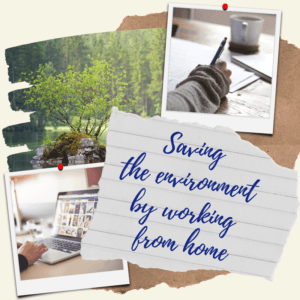
Spain contains four of these regions. Three on the peninsula, the Atlantic, Alpine, and Mediterranean bio-geographic regions. The fourth, the Micronesian is on the Canary Islands. The combination of these four different regions makes the conservation of the wide variety of flora and fauna in Spain extremely challenging.
In Spain, the protected areas cover more than 12 million hectares, including 5 million hectares of marine areas. It represents over 14% of its land area and 5% of its marine area. There are 1.467 sites of community importance and 657 special protection areas for birds.
Endangered hotspot animals
The International Union for the Conservation of Nature is committed to global biodiversity. In 1964 they started with a worldwide red list of endangered species. More than 32,000 endangered species are identified up until now. Amphibians such as frogs and salamanders are the most endangered species. Birds the least.
Such figures, however, are no indication of the danger of extinction of an actual specific animal or plant. The Iberian Lynx (Lynx pardinus) is the world’s most threatened species. The Iberian Lynx only lives in Spain and Portugal. It is critically endangered as a result of the fragmentation of its natural habitat by agricultural and industrial development.
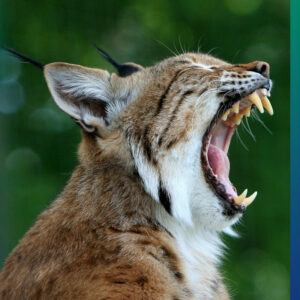
Another example of endangered species in Spain is bats. They are threatened by the growing use of insecticides in agriculture as well as in green urban areas, such as private gardens and public parks. These insecticides destroy the natural prey species of bats, such as the pine processionary caterpillar (Thaumetopoea pityocampa).
In addition to the loss of habitats and the poisoning of their prey with insecticides, bats are deliberately persecuted. Some people think they transfer viruses. Unfortunately for the bats, it’s the other way around. Bats are threatened by human viruses, such as the Covid-19 virus.
However, there is also some good news. The Iberian Wild Goat (Capra pyrenaica) was almost extinct. Due to intense conservation efforts, it’s recently been declared a species of least concern. Protected areas and abandonment of agricultural areas are the main drivers of this species’ recovery.
We are very curious how we personally could contribute more to biodiversity. Do you have any ideas? And if so, please tell us in the comment box.

I love your post. It’s very informative. I can’t believe councils allowing people to spray with poisons and they wonder why they get sick themselves. We live next to a conservation park, and I often hear people say how beautiful it is to live here. And when they look around they see natural beauty, no concrete roads only walking tracks. Yet it amazes me that they can’t enjoy nature in their own backyards.
My idea as well, Yvonne. Coincidentally I live next to a nature park as well. The municipal council is doing its best to become a green municipality, but is opposed on all sides by parties of a different signature. Most Spaniards, especially the younger ones, throw rubbish out of the car window or just drop everything out of their hands where they are. Very depressing at times.
Reading your post, I was overwhelmed by some sadness… So many species are disappearing every day and people are behaving so disinterestedly as if it doesn’t affect them. I believe that man is deeply connected with nature and animals and that every change in them greatly affects him. Unfortunately, not only we do not care that so many species of animals and their habitats are disappearing every day, but we are also the biggest causes of it.
In answer to your question, I believe that everyone can personally contribute to increasing biodiversity in a way that will not pollute the environment, will not cut down forests, burn vegetation and build settlements on natural animal habitats. Our little for animals is plenty! Thank you for raising awareness about such a big problem with texts like this.
I understand you, Danijela. I had the same feeling reading your blogpost, since you were writing about a similar subject. Let’s continue living our talk and expect that people will grow awareness and follow our example. 🙂 I learned that from your post: stay optimistic!
It makes me so sad that your neighbors spray those poor caterpillars. Caterpillars one day become beautiful butterflies … Have you tried to talk to your neighbors about it?
I see the same thing where I live. I have few neighbors because I live in the middle of nowhere but my nearest neighbors kill every insect that crawls into their house or that they see near them. I don’t. I do not kill scorpions, or any kinds of spiders, with the exception of the brown recluse and the violin spider which are extremely poisonous and dangerous … There are hundreds and hundreds and daddy long legs living in my outdoor kitchen. I see them sleep huddled together in the day time – they get active at night, and I do not harm them. After doing some research I learned that daddy long legs keep poisonous spiders away and that they are basically like a natural insecticide, keeping most insects away. Then there are also a lot of praying mantis. So there you go. Lots and lots of birds either come to my land to feed or they already have built their nests on my land. There are lizards and frogs galore and I have also spotted an iguana. Frogs come to have a little pool party in my dogs’ water bowls at night, it is so cute 🙂
Basically our small community is a mini version of what is happening in the world. My neighbors, instead of adapting to the environment, kill everything in plain sight. I try to adapt instead and I refuse to kill those insects and gopher snakes. A few days ago a neighbor came over to my place and he saw a daddy long legs. His hand moved, but then he stopped and saw the look on my face, and he knew … on my land no killing is allowed, and he did nothing, but he wasn’t pleased about it, haha. I also do not use pesticides, but I use tobacco or cinnamon to keep pests (such as grasshoppers that can destroy crops) away. You see the difference. My soil is super fertile, while the soil on my neighbors’ land is mostly not.
It is true that species extinction is natural, but it takes time, even decades or centuries. With the human environmental destruction, however, we have sped up species extinction at an alarming rate … We need to slow down and change our lifestyle … we need to take action before it is too late. I think it is already very late …
Hi Christine. I have tried to talk with my neighbors about it. Asked if they then at least wanted to consider an ecological spray. Consulted the ecological association here in Murcia for alternatives and suggested those to them. And we have tried to mobilize the rest of the street to make a different choice. No use.
The processional caterpillar will become an ‘ugly’ moth, not a beautiful butterfly. Maybe if it did grow into a butterfly they would act differently, I don’t know. The reason they spray is that the processional caterpillar can be lethal for pets. That part I can understand. But it’s beyond me why they don’t even want to consider an ecological product.
I love your story about your neighbor. LOL, very good that just a look stopped him from slapping. It’s important though to be surrounded by likeminded people. We feel very alone at the moment in our street. Even the people we thought were more conscious contributed to the spraying and had their garden done as well. Hopefully things will change.
Hey Hannie,
Very insightful post. I learnt a lot! Among other interesting facts, I learnt that:
– there are some 3 to 100 million animal species in the world and probably still counting! (Wowzers!!!)
– 40% of the raw materials that are used to produce medication comes from wild plants!
– Spain is one of the most diverse countries in terms of bio-diversity, and how there are 25 biodiversity hotspots of the world.
What a rich planet we have; it is a shame that we abuse it as you set out.
You wanted to know how we could more to preserve bio-diversity. Education. We have to keep the education going, keep telling the story, keep raising awareness. I am one of those folks who will kill most insects because I think they are plain harmful or a nuisance. But when I hear and read how they contribute to ‘life’ or that I have other choices instead of just killing them, I’m able to reconsider and change my behavior.
People can change and they do change – it’s not too late.
Cheers
Femi
Hi Femi,
Compliments for your awareness.
Yes, we have a rich planet. We wonder though whether everybody is aware that this richness has its limits. Moreover, why do we have to turn all this richness to our comfort? Why not the other way around? Why do we not more consistently try to adapt ourselves to the concerns of flora and fauna?
This makes me want to share another observation with you. Almost every country has a national science organization. The Royal Society in the UK is a classic example. The topics of most of these organizations are geared to natural, chemical and technological sciences. Human behavior has done a great disappearing act in the world of science.
This is ultimately very strange. What do scientists think? That biodiversity can be saved by studying the most tiny of tiny animals in its individual habitat? Only the understanding of human behavior and the ways how this behavior can be changed will help us to deal with the biggest predator of all times.
Nevertheless, stay optimistic, stay save and stay healthy.
Have a nice day.
Regards,
Tom
It’s inconceivable to me that the French parliament allowed the use of known carcinogenic pesticides to be used on beet seeds that are to be consumed by the French people. Is this not the act of criminals?
Are they somehow unaware of the destruction of worldwide ecosystems as well as the escalating ill health of people as well as the remaining animal and insect populations (the one we haven’t yet manage to completely wipe out?)
These, so-called educated people who are making horrendous decisions (for the profit of a few) that negatively affect the balance of life on Earth, as well as the health of all life, should be held personally accountable for the consequences of their actions.
Unfortunately, there is no punishment severe enough to compensate for the willing destruction of the biodiversity that mother earth has spent millions of years perfecting for us to enjoy!
It saddens me that the consciousness of humanity is so un-evolved that we continue to exploit our beautiful planet for profit (pieces of paper with numbers on it) instead of enjoying a cooperative existence with all of the diverse life that mother nature has, in her wisdom put on this earth to share with us.
Many thanks for an enlightening article.
Hi Andrew,
Thank you for your compliments.
To set the record straight, of course you don’t meant that people eat beet seeds. They eat the sugar that’s made from the beets that are grown with the seeds.
For me the problem isn’t that humans are at risk. Humans can make choices. Plants and animals can’t, they just disappear. Water and the air and the soil can’t make choices. They get polluted by humans that can make choices.
The challenge is that we humans have to defend the ‘free rights’ of the plants, animals and all the other resources that support us. Can we trust such a complicated task in the hands of humans? Unfortunately, in this we have no choice. We have to defend these ‘free rights’. And we have to do this vigorously and relentlessly.
In this you’re quite right. We have to do it collectively. If there is one thing we as individuals have to do, is work together. In a world in which the individual is sacred, this is one of the biggest challenges we collectively face.
Thank you for your comment and support. Let’s continue the fight.
Regards,
Tom
Very informative article, Hannie. You really went into depth explaining the severity of the problem. We live in a rural community but do have neighbors. We have one neighbor who seems to want the perfect lawn with no weeds, or bugs of any kind. Right next to him is another neighbor who does nothing with their lawn. They don’t even cut the grass until their small children can no longer walk easily. We are somewhere in the middle. I don’t use any chemicals and don’t kill bugs when possible. We have bat-houses to encourage bats to live here. They eat the mosquitoes that we don’t want eating us. Our community also releases dragonflies each spring to help control the mosquitoes. I use compost in my garden, I don’t use any chemicals, not even for cleaning. I make my own household cleaners. It saddens me to see how many in our community refuse to adapt to the environment instead they insist on changing the environment to suit them.
Hi Deb,
You are right, humans want to continuously change their environment to their own needs. This must stop.
One of the challenges is to involve those that do not share your and our opinions. How do we try to make them cross the threshold? They are supported by the politicians they choose and the greedy businessmen who profit from their ignorance or conscious malice.
We will only be able to change this if enough people change their minds. Let’s keep spreading the word, let’s end greed and selfishness.
Thank you for your compliments. Have a nice day.
Regards,
Tom
We are doing so much damage to the world and the balance is is disrupted now I sometimes wonder if we will ever stand a chance of recovering! I love visiting my mom and learning how she does her veggie garden at her farm. She has a word farm, makes her own compost and she is always learning about different things to plant to draw in the bugs and things she needs and things to plant to deter or draw away the insects that are a problem for her. She does companion planting and does not make use of any insecticides. I’m now growing my own veggies in pots at my house and trying to follow her lead. Yes it won’t have a huge effect on the earth but its my bit of doing things right.
I wish more people would start realizing the dangerous path we are on. So many animals are on the brink of extinction. It is so sad.
Hi Lynne,
We agree, the way humans behave is often sad. Fortunately, you and all the others who responded to this article about global biodiversity, are aware that something must change. This is heart warming.
Positive are also all the small things we do. Your mother and you are exemplary. Please keep up the good work. Every small contribution counts. Besides, such contributions give so much satisfaction, are very inspiring and mitigate our sad feelings.
Have a nice day, stay safe and stay healthy.
Regards,
Tom
Global biodiversity does indeed dictate the quality of our life. It’s sad to hear that around 95% of all the animals and plants that ever lived on the planet ceased to exist. I understand it’s normal for things to cease to exist but I wasn’t expecting this kind of number. And we as humans are not doing enough to stop the extinction of many more plants and especially animals.
Happy to hear that Spain is a biodiversity hotspot. There are others as well, but it’s not enough. We must put pressure on our Governments so they know this is important to us and they make changes. We humans are the ones that have barged in on this planet’s habitat and we need to protect it. Otherwise we will soon find ourselves on the brink of extinction.
Hi Erica,
Yes Spain is a biodiversity hotspot. Which doesn’t mean that the quality of the biodiversity in this hotspot is as it should be. Many Spaniards don’t seem to be very aware of their biodiversity hotspot.
This surprised me a lot because they are rather proud of their country. Apparently their type of proud doesn’t mean you have to be considerate.
You’re right in pressing governments to act up in favor of biodiversity. However, we should also try to convince ourselves that we can do a lot as well.
Anyway, when I’m not in a too good mood I always wonder whether the planet wouldn’t better off without humans. If the dinosaurs got extinct why not the humans?
This morning I read that some 100.000 years ago there was indeed a relatively short period that the human race would not have been able to survive. Only a couple of thousand humans were left on the planet.
There is a very small light though at the end of the very long tunnel. Statisticians calculated that in the year 3100 there will only live a very small fraction of humans on the planet. In Italy for instance only 600.000 humans will remain of the current 60 million.
For us this is only a small comfort, because at that time we will probably not be around anymore. Moreover, not all statistical predictions come true.
The main issue is that we have to trust each other to do the right thing. For now lets give us humans the benefit of the doubt. This will leave us with some positive thoughts at the end of this very interesting year.
Stay safe, stay healthy.
Regards,
Tom